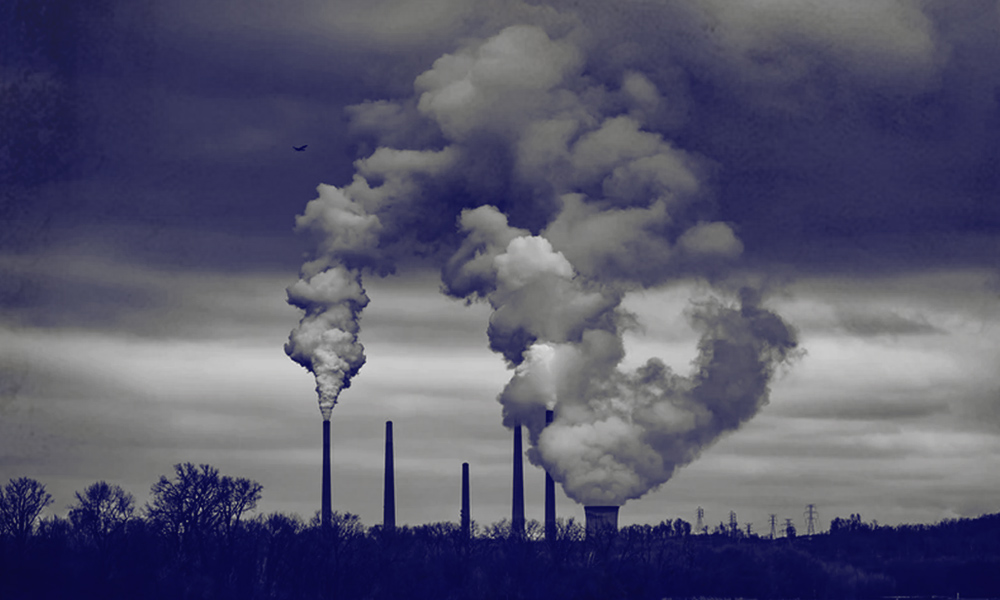
Archeological Survey of India, ISRO Join Hands To Set Up 'Weather Stations' To Monitor Air Pollution At Historical Sites
Writer: Palak Agrawal
Palak a journalism graduate believes in simplifying the complicated and writing about the extraordinary lives of ordinary people. She calls herself a " hodophile" or in layman words- a person who loves to travel.
India, 28 Jan 2021 3:58 AM GMT | Updated 4 May 2021 1:10 PM GMT
Editor : Navya Singh |
Navya writes and speaks about matters that often do not come out or doesn’t see daylight. Defense and economy of the country is of special interest to her and a lot of her content revolves around that.
Creatives : Rajath
A free spirit who find meaning in life with the virtue of creativity and doing job par its excellence, animal lover and traveller by heart.
To study the damage done by deteriorating air quality and changing weather patterns and to offer solutions accordingly, the Archeological Survey of India (ASI) has planned to set up its own weather stations at some of the UNESCO and ASI-protected sites in collaboration with ISRO.
Air pollution killed nearly 17 lakh people in India in 2019, accounting for an alarming 17.8 per cent of total deaths last year in the country, revealed a scientific paper on health and economic impact of air quality deterioration.
The 2020 Annual Air Pollution report pointed out that country's smaller towns were comparatively at higher risks than the big cities. For instance, the report stated that bigger cities like Delhi and Varanasi saw a reduction in the levels of air pollution whereas smaller towns like Fatehabad and Moradabad witnessed an increase in the pollution levels.
Air pollution menace has been putting a huge population at risk but it has also been reported to be impacting country's heritage including centuries-old monuments, buildings that have a significant value attached to them and precious paintings and murals.
To tackle the issue head-on by studying the damage done by such deteriorating air quality and changing weather patterns and to offer solutions accordingly, the Archeological Survey of India (ASI) has planned to set up its own weather stations at some of the UNESCO (United Nations Educational, Scientific and Cultural Organization) and ASI-protected sites.
Humanyun's Tomb, Sun Temple, Charminar and Hampi are some of the sites that have been selected for the project, according to a report by The Times of India.
Automated Weather Stations
The Indian Space Research Organisation and ASI would jointly set up these monitoring units called the 'Automated Weather Stations'.
Reports suggest that these stations would be equipped with advanced equipment that can monitor pollution and change in weather patterns. Additionally, to ensure that the project yields desired results, ASI is also exploring the idea of strengthening its science department which is based in Dehradun.
Funds have reportedly been allocated for the purpose and the organisation is planning to hire as many as 50 archaeological chemists to study, preserve and conduct research on new conservation methods of murals at various sites that are degrading due to harsh climate or increased tourism.
Each site has certain distinctive characteristics that require unique tailormade solutions which ends up making conservation an arduous and time-taking process. For example, Tabo Monastery nestled in Himachal's greenery is situated at a high altitude and is prone to harsh weather during most of the year which makes the restoration work difficult. A few sites in Ladakh including the Leh Palace poses similar challenges.
Most importantly, the proposal includes the preservation of paintings.
Deploying a team of archaeological chemists to work on Tabo and Ladakh is part of the scheme. Furthermore, ASI wants to set up museum labs in five critical sites where antiquities are kept. Ahmedabad, Bhubaneswar, Chennai, Delhi and Mumbai have been shortlisted for setting up the museum labs which would study compatible methods of conservation in collaboration with reputed institutions of national and international level.
Presently, the premier organisation has two such labs in Aurangabad and Agra looking for Ajanta and Ellora murals and the Taj Mahal. Reports highlight that these labs require upgradation.
Besides the labs, seven new independent zones of ASI's science branch are being planned at such as Guwahati for the north-east, Jabalpur for Indore monuments, Sarnath for eastern Uttar Pradesh, Srinagar for Jammu and Kashmir, Mumbai, Jodhpur and Rajkot.
"For recruitment of chemists, we will give preference to those sites that immediately need chemical treatment and preservation. Hiring will also be done for sites that need conservation of paintings, murals and wooden structures," an ASI official said.
Slow, Long Lasting & Irreversible Damage
An Economic Times report revealed that signs of degradation were visible on a number of affected monuments especially the ones built in white marble or limestone like the Taj Mahal. It stated that braving certain weather conditions and pollutants like sulphur dioxide and nitrogen dioxide emitted from vehicles and industries have resulted in a change of colour and even corrosion.
"A black, grimy muck comes off. But, it is not just dust. It is the unburnt fuel from the vehicles and the sulphur fumes from the industry. These get into the cracks and get accumulated over time. The acid rain seeps in and damages the monuments," said academic, activist and writer Sohail Hashmi.
Citing another example, he said that the white limestone doors in Red Fort that were revived in 2010 during the Commonwealth Games had turned yellow in a span of just six years due to pollution. Talking about the national capital and taking into consideration the given circumstances where development has become one of the leading causes of deterioration, Hashmi said that the state government's efforts curb the impact could not be dismissed. However, the efforts lacked a direction and a long term plan where the use of private transport is reduced and substituted for efficient public transport.
"At least 10,000-15,000 buses must be available at all times," he said.
A research paper on 'Effect of Environmental Pollution on the Monuments and Historical Building' listed the measures that can be implemented to prevent the impact. Steps to control the emissions of pollutants by monitoring vehicular movements, ensuring that construction activities are undertaken far away from the historical building and monuments and planting trees along the roadside and around industrial premises which can absorb the dust and smoke can be taken into consideration.
Additionally, managing the traffic movement around the monument can help in preventing noise pollution which has been proven to cause cracks and eroded surfaces in such buildings.
Another crucial step includes controlling the disposal of untreated industrial and domestic waste in water bodies surrounding such infrastructure. The discharge of industrial effluents serves as a breeding ground for microorganisms which deposit on the surface of the monument.
Also Read: Hyderabad Plans To Generate Clean Fuel From Dirty Drains Using Sewage Treatment Plants
 All section
All section














